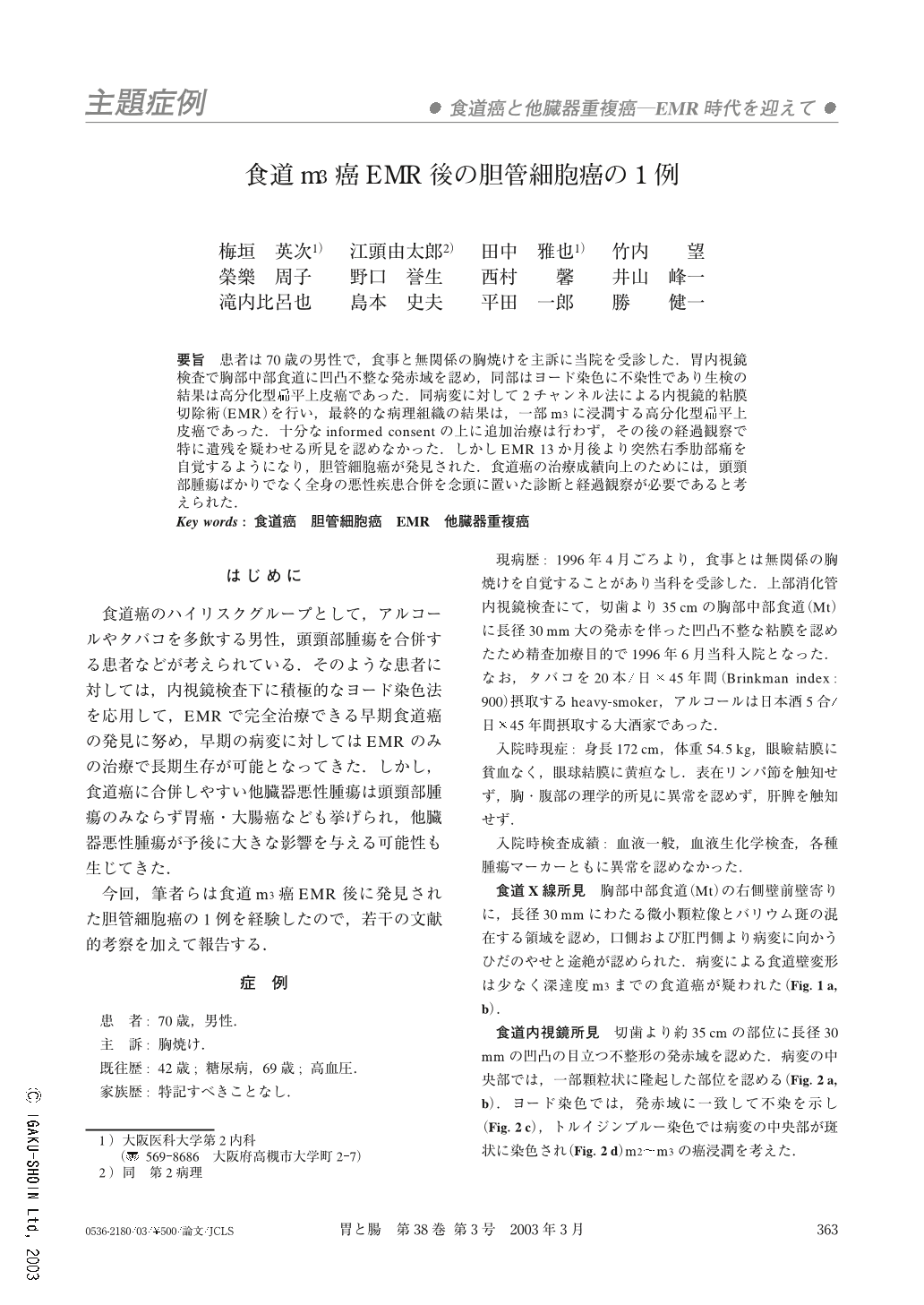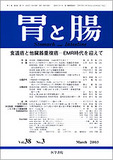Japanese
English
- 有料閲覧
- Abstract 文献概要
- 1ページ目 Look Inside
- 参考文献 Reference
患者は70歳の男性で,食事と無関係の胸焼けを主訴に当院を受診した.胃内視鏡検査で胸部中部食道に凹凸不整な発赤域を認め,同部はヨード染色に不染性であり生検の結果は高分化型扁平上皮癌であった.同病変に対して2チャンネル法による内視鏡的粘膜切除術(EMR)を行い,最終的な病理組織の結果は,一部m3に浸潤する高分化型扁平上皮癌であった.十分なinformed consentの上に追加治療は行わず,その後の経過観察で特に遺残を疑わせる所見を認めなかった.しかしEMR13か月後より突然右季肋部痛を自覚するようになり,胆管細胞癌が発見された.食道癌の治療成績向上のためには,頭頸部腫瘍ばかりでなく全身の悪性疾患合併を念頭に置いた診断と経過観察が必要であると考えられた.
The patient was a 70-year-old man who came to our hospital with the chief complaint of heartburn occurring without relationship to meals. Gastroendoscopy showed a reddish area with an irregular surface in the mid-thoracic esophagus. The lesion was achromatic on iodine staining and was identified by biopsy to be a well differentiated squamous cell carcinoma. Endoscopic mucosal resection (EMR) was performed for treatment of the lesion, using the two-channel method. Histopathological examination confirmed that the lesion was a well differentiated squamous cell carcinoma partly infiltrating to the m3. After the patient gave informed consent, no additional treatment was performed. Subsequent examinations did not suggest the presence of remnant tumor. At 13 months after EMR, the patient abruptly developed right hypochondralgia, and cholangiocarcinoma was found. To improve the prognosis of esophageal cancer, when follow-up is performed, attention should not only be paid to metastasis in the head and neck region, but also to the development of neoplasms elsewhere.

Copyright © 2003, Igaku-Shoin Ltd. All rights reserved.


